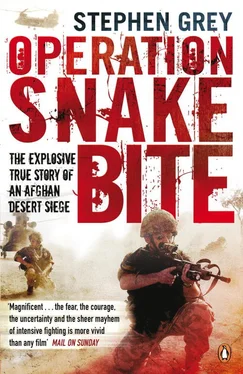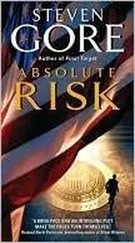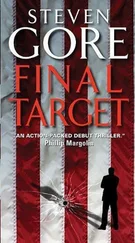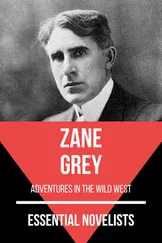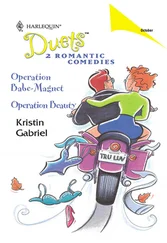Brigade staff who attended the meetings with the elders were suspicious. They wondered if the villagers had been stirred up by the Taliban to make up the allegations of innocent civilians killed. Though supposedly elders from the community, the people involved were unfamiliar. Was this an attempt to turn the Afghan government against the coalition?
Time and again, the facts of these ‘civilian casualty’ incidents were disputed. The special force units involved would claim that only Taliban or terrorists were killed in the attacks; Afghans would complain that innocents had died too, and the Afghan government – often President Karzai himself – would say he was outraged. Intelligence officers believed the Taliban were being increasingly sophisticated: encouraging the media to report such allegations because they knew what controversy the deaths of civilians had caused.
An investigation was launched by US Central Command into allegations that innocents had died in the raid. The soldiers involved claim that no one’s throat had been slashed. And all those killed or injured had been photographed and were accounted for. ‘It is clear to us that all of those injured or killed were enemy,’ said one US source, speaking only on condition of anonymity.
And yet, when I asked further questions about this incident in Helmand and in Kabul, something still did not ring true about the Allied explanations. Rather than a consistent story, different explanations were offered for what happened.
‘This raid was carried out as result of intelligence and against a leadership target,’ said another senior coalition source. ‘We believe the Taliban may have come back and taken revenge against the villagers they blamed for tipping us off. Then they ordered these people to blame us.’
Major Milford – who knew nothing of the details of the raid but simply had to deal with some of the elders who protested – said he never quite got to the bottom of things. There was something distinctly odd about those who complained. The truck that brought the injured was identified later carrying Taliban fighters. But if they had really been Taliban who were hurt and killed that night, why would they have brought them to the British base? And why would the tribes have protested so vehemently? He didn’t know the answer. ‘I’m slightly dubious of them, but my personal view is that they were probably smugglers… But, I mean, you’ll never know. It’s just so grey, it’s unbelievable.’
For months, the manhunt pursued by these elite forces had been relentless, particularly since the summer. Now, as an attack on Musa Qala loomed, senior US commanders ordered an intensifying of strikes in Helmand.
Military intelligence was producing large diagrams of the leadership of Taliban groups and how they were inter-connected. Names of the important figures were highlighted and became designated as high-value targets, or HVTs.
This was the bread-and-butter work of intelligence across the world in the war on terror. The difference in Afghanistan was that, provided the information was corroborated by enough sources , a place on the chart could mean a death sentence. ‘It is death by link diagram out here,’ one intelligence officer told me. One by one the charts were modified with crosses through the names of those who had been eliminated.
Some soldiers, including some from special forces, felt uncomfortable. They compared all this to the tactics of the Israelis, who systematically assassinated the leadership of Palestine militant groups. It had not won the war there. Or even quelled the violence one jot. It was not that many shed tears for those who were assassinated. Some just wondered where this ‘take-down’ of enemy leadership was leading, and whether the intelligence was good enough to get it right. Too often the wrong people got killed, as well as anyone who just happened to be around at the time, some said. It was not that innocents were deliberately killed.
One officer, reflecting a minority view, was harshly critical. ‘They always say afterwards that the dead were enemy, or they went for the gun. But the reality is that every young man ends up dead.’ When attempts were made to investigate afterwards, all involved clammed up.
The same officer, with some direct knowledge of the special forces, continued: ‘The routine is something like this. Go to a gym, pump some iron, jump into a helicopter in the dark, jump out and kill all males of fighting age and then go back, get a bit of kip and then back to the gym, pump some iron.’
A more nuanced view, from someone with current special forces involvement, was simply that the balance had gone wrong. Enemy leadership targets needed elite units to hunt them down. But historically special forces had had a much wider role. Time and time again, unconventional wars needed special forces at the heart of the battle. That meant deploying them on long-range deep patrolling, in covert positions, for accurate ‘eyes-on’ targeting. Above all else they should be working directly and mixed up with local indigenous forces, exploiting their language skills and ability to work with little support or back-up, in small teams. It was their work alongside the Omani regulars in Dhofar in the 1970s that had been the most famous role of the SAS. That was also the reason the American Green Berets were set up by President Kennedy.
‘We’re too focused on this secret work, too focused on take-down operations,’ said the officer. ‘The skills of the special forces are the skills needed for assisting the main fight – for the wider effort of getting down among the population and working alongside some pretty wild elements, being lethal but focused. That is what wins these kinds of wars. We have not abandoned this work. We are doing it. But it should be the main effort.’
The elimination of Taliban leadership, others pointed out, appeared to be at odds with the idea of a reconciliation with them. There was a risk of eliminating an Afghan version of the Irish Republican leaders Gerry Adams or Martin McGuinness who could be the ones negotiating a peace. The fear of death might drive enemy leaders to the negotiating table, but it also eliminated some of the few local leaders and strongmen with whom the Afghan government and NATO forces might eventually have to make a deal. One senior British intelligence source pointed out to me that the lessons from the battle against the IRA were that terrorist leaders only entered into meaningful talks once they grew tired of the fighting. ‘To some extent, these people have to grow old. There is not much you can do when their rage is still young.
Senior commanders argued that no one would be targeted if there was a belief they might cross sides. A rigorous targeting process meant that all options were considered before a strike. But the Taliban being killed were the same ones who were planning bomb attacks or ambushes on British or American troops. All would be replaced eventually, but the death of every leader was a setback for the enemy – and those who replaced them were generally not as capable, they insisted. Though as one Taliban leader after another was eliminated – and the rebellion got stronger – many found it hard not to conclude this was wishful thinking.
For all his belief in reconciliation, Michael Semple also took a sympathetic view of the targeting. From directly talking to the Taliban in Helmand, what he saw was a growing fear of death among these men that might encourage some to start thinking of quitting.
‘I found as the target killings continued,’ recalled Semple later, ‘a stunning sense of mortality was encouraged by that. They were well aware they were about to be targeted. They didn’t want to die.’
By the time Sher Agha, the target of Black Carib, was killed on 18 November, the Gurkhas of B Company in Garmsir had been under attack for days. And when he died the attacks stopped. ‘That is why I personally didn’t kick up much of a fuss because it did give us a breathing space,’ said Mark Milford. ‘Every time there was some sort of activity further south, we’d have a couple of days’ rest, basically.’ Milford had also won a new concession. Next time there was a raid near his patch, he was promised at least several hours’ notice.
Читать дальше
